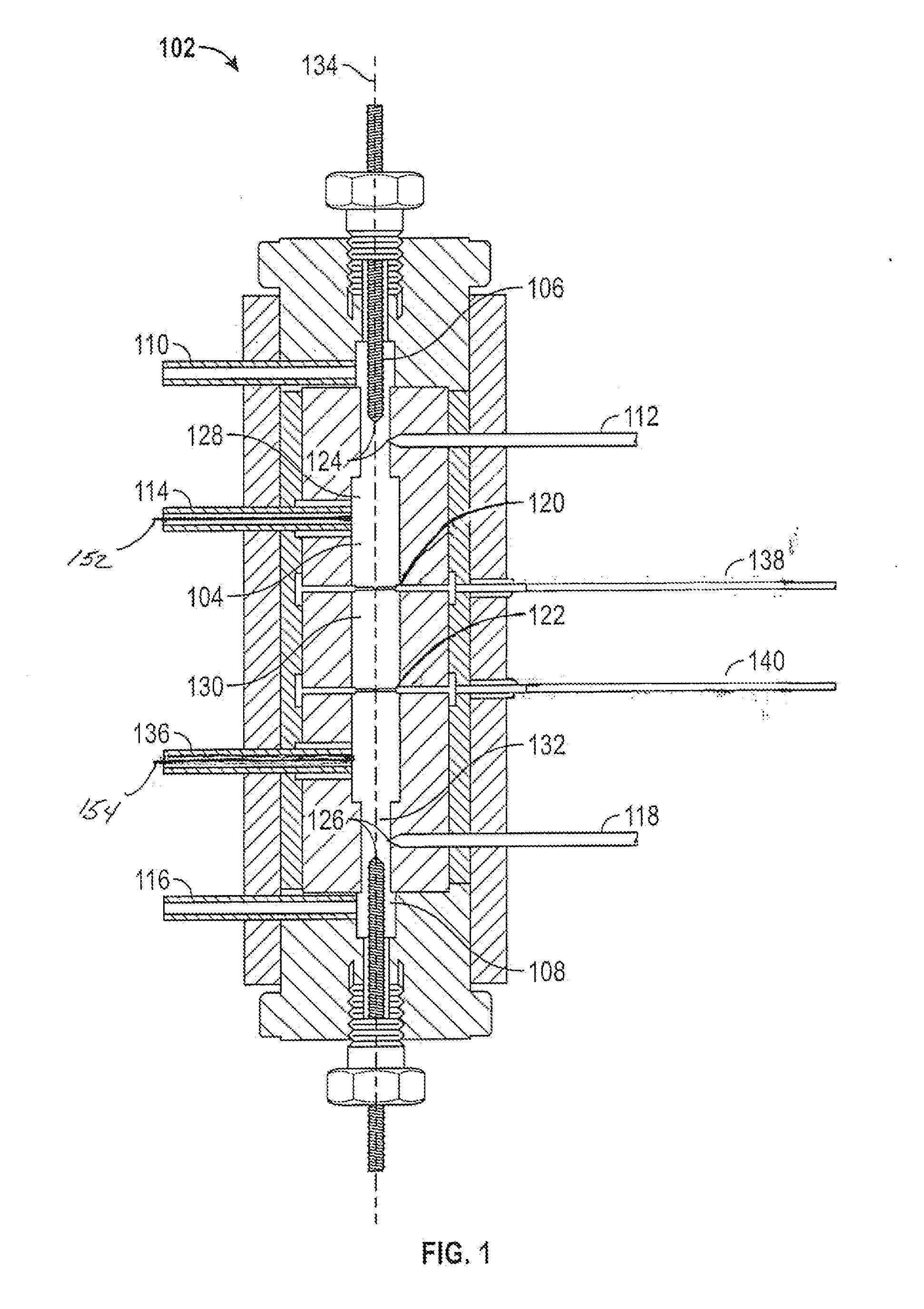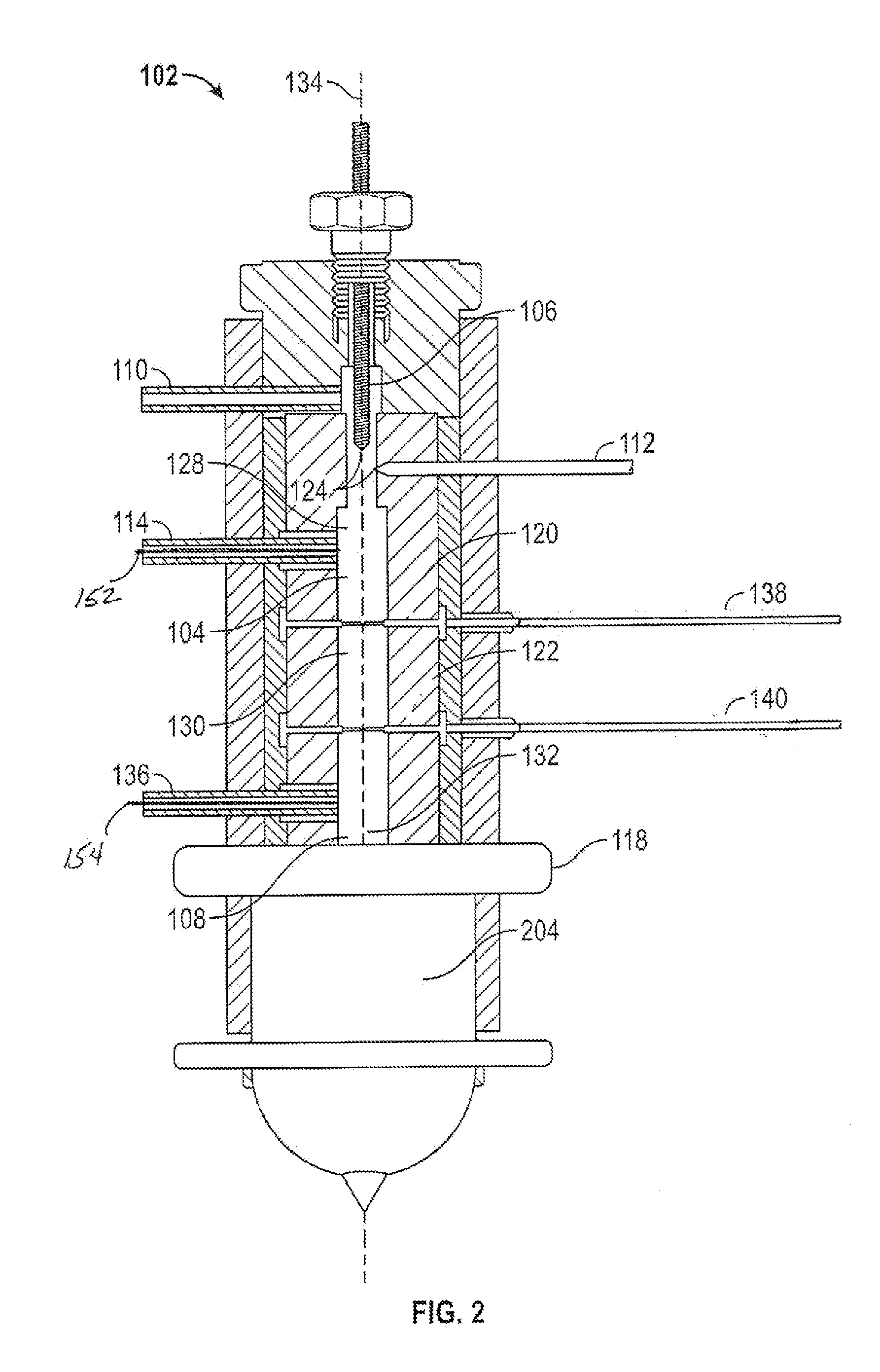Photo ionization detector for gas chromatography having two separately ionizing sources and methods of use
a technology of ionization detector and gas chromatography, which is applied in the direction of instrumentation, electric discharge tubes, particle separator tubes, etc., can solve the problems of insufficient adoption success, non-selective systems, and limited information which may be obtained from within the detector cell by the electrode, so as to improve the selectivity and reduce the photon energy. , the effect of increasing the photon energy
- Summary
- Abstract
- Description
- Claims
- Application Information
AI Technical Summary
Benefits of technology
Problems solved by technology
Method used
Image
Examples
Embodiment Construction
[0024]The present photo ionization detector provides a detector body for dual discharge photo ionization detector with two or more collecting electrodes and a method of use for gas chromatography.
[0025]Referring to FIG. 1, an illustration of a detector body of the present photo ionization detector using pulsed discharge as the first and second ionization sources, the dual ionization source ionization detector body 102 includes an enclosed elongated chamber 104 having a chamber first end 106 and a chamber second end 108, a first ionization source 112, a second ionization source 118, a column gas inlet piping 114, a first collecting electrode 138 having a first collecting electrode end 120 which may be constructed to function as a combined bias / collecting electrode, and a second collecting electrode 140 having a second collecting electrode end 122 which may be constructed to function as a combined bias / collecting electrode, and an outlet piping 136 from the enclosed elongated chamber ...
PUM
| Property | Measurement | Unit |
|---|---|---|
| wavelength | aaaaa | aaaaa |
| wavelength | aaaaa | aaaaa |
| area | aaaaa | aaaaa |
Abstract
Description
Claims
Application Information
 Login to View More
Login to View More - R&D
- Intellectual Property
- Life Sciences
- Materials
- Tech Scout
- Unparalleled Data Quality
- Higher Quality Content
- 60% Fewer Hallucinations
Browse by: Latest US Patents, China's latest patents, Technical Efficacy Thesaurus, Application Domain, Technology Topic, Popular Technical Reports.
© 2025 PatSnap. All rights reserved.Legal|Privacy policy|Modern Slavery Act Transparency Statement|Sitemap|About US| Contact US: help@patsnap.com



